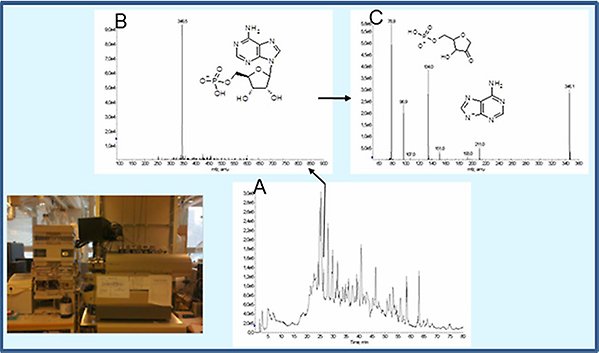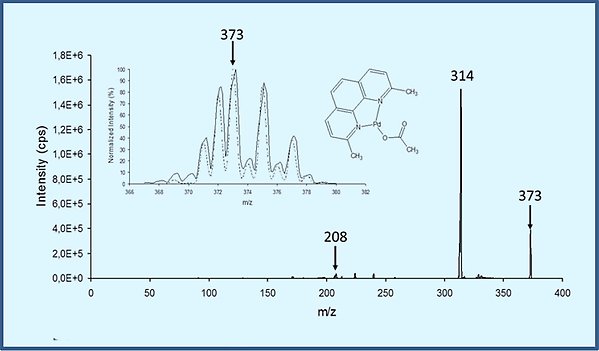Research projects in Sjöberg Group
We develop methods and techniques for measuring the constituents of samples that consist of many different chemical compounds, so-called complex samples. In order to obtain the information we want, the methods we use must be more or less selective, i.e. have the ability to distinguish between different compounds. To achieve increased selectivity, we try to link different separation techniques, such as chromatography, to mass spectrometry. The methods we develop can be used in the environmental field, the forest and agricultural industries, as well as in organic chemical research.
Organic phosphorus compounds in the environment
Phosphorus is an important element for primary production, but high levels of phosphorus can contribute to problems such as eutrophication of lakes and rivers. Eutrophication of water systems leads to algal blooms and deteriorating water quality. In nature, phosphorus exists in both inorganic and organic forms. Our goal is to understand how the amount of the different organic forms changes over time. This knowledge can contribute to an increased understanding of how phosphorus affects our environment. Development of new analytical methods for identification and quantification of organophosphorus compounds in environmental samples is therefore one of our main goals.

LC-ESI-MS-MS-data (Qtrap) from LC-separation of sediment extract: a) TIC b) MS-spectrum, c) MS-MS-spectrum.
Compounds in by-products from forestry and the agricultural industry
The aim of this research is to increase the re-use of high-value compounds from agricultural by-products and waste. Target molecules of industrial/nutritional value include antioxidants (flavonoids and fat-soluble vitamins) from carrot waste, apple peel, onion skin, birch bark, and fruit press cakes. To gain knowledge about sample composition and suitable extraction conditions, the use of techniques such as liquid chromatography, mass spectrometry and electrochemical analysis are explored. Several ionization techniques combined with liquid phase based separation techniques are evaluated to get a broad picture of the sample composition. To discover valuable compounds such as antioxidants in biomass-waste, we utilise a recently developed on-line LC-EC-MS/MS system.
Intermediates in organometallic catalysis
Organometallic compounds are often used to catalyse chemical reactions in the synthesis of organic molecules, so-called organometallic catalysis. In order to optimize the synthesis methods and develop new organometallic catalysts, it is important to understand the mechanisms behind the catalysis. Mass spectrometry, with its selectivity and sensitivity, is a technique that has the ability to provide insight into which different organometallic complexes are present in an ongoing reaction. In this project we explore the possibility to monitor different catalytic organopalladium intermediates (Pd-complexes) in ongoing coupling reactions.

MS- and MS-MS-spectra of a palladium-complex (m/z = 373).
